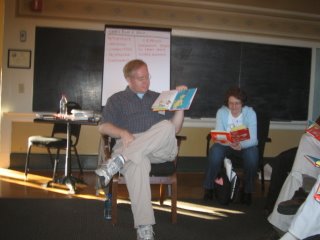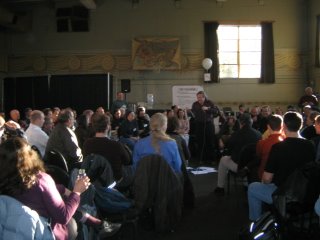Working--share your experience
One of my all time favorite books is Studs Terkel’s Working. In it, he captured people talking about what they do and how they feel about it. People tell amazing stories about hard work. The book is about, "ulcers as well as accidents, about shouting matches as well as fistfights, about nervous breakdowns as well as kicking the dog around." I hope you don’t find software development so grim (I don’t ). But maybe you have an intriguing story to tell.
OOPSLA is soliciting Practitioner Reports. The submission deadline is just a short time away--March 19th. If you submit a report and it is accepted, Ralph Johnson or one on his committee will help you tell your story. There are many more interesting stories to be told and if you have one, please consider telling it at OOPSLA. Last year there was a really great story about how software objects finally made it to space in a JPL satellite through the persistence of a guy who really, really believed in the benefits of oo programming. A grad student at Portland State presented his experience exploring Traits--when he was an undergrad. I remember another report where a developer recounted his use of refactoring tools to write transformation rules to transmogrify a massive Smalltalk legacy application’s database access layer. And I recall another telling how a framework for scientific applications evolved. There are always interesting stories to tell—and OOPSLA is a place where you can tell them, whether they be about your latest adventures with web services, domain-driven design, aspects, agile or open source development, or the challenges of developing applications in distributed teams.
OOPSLA is soliciting Practitioner Reports. The submission deadline is just a short time away--March 19th. If you submit a report and it is accepted, Ralph Johnson or one on his committee will help you tell your story. There are many more interesting stories to be told and if you have one, please consider telling it at OOPSLA. Last year there was a really great story about how software objects finally made it to space in a JPL satellite through the persistence of a guy who really, really believed in the benefits of oo programming. A grad student at Portland State presented his experience exploring Traits--when he was an undergrad. I remember another report where a developer recounted his use of refactoring tools to write transformation rules to transmogrify a massive Smalltalk legacy application’s database access layer. And I recall another telling how a framework for scientific applications evolved. There are always interesting stories to tell—and OOPSLA is a place where you can tell them, whether they be about your latest adventures with web services, domain-driven design, aspects, agile or open source development, or the challenges of developing applications in distributed teams.


